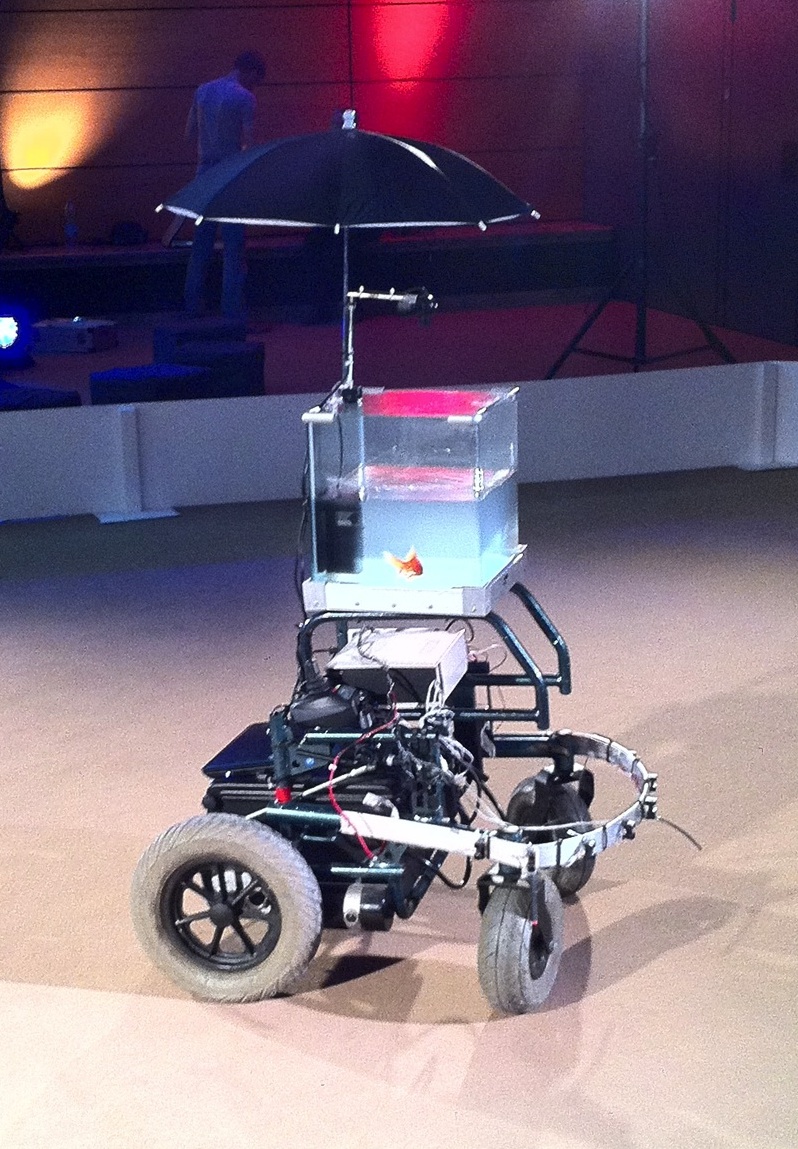In late October I attended Elliot Masie’s Learning Conference. I’ve blogged extensively about each individual session, but want to use this post to lift out the larger themes that I saw at the event and to ask the corporate learning departments a few challenging questions that relate to these themes.
Personalized Learning
A few years back Wayne Hodgins and Eric Duval started talking about the Snowflake Effect. They gave examples of media channels providing personalized offerings (think Last.fm) and could see this coming for learning too. Every learner is different (just like a snowflake) and has individual needs. Richard Culatta did a talk on personalized learning that resonated with his audience. He had a simple definition of what it means to personalize: you need to adjust the pace, you need to adjust the learning approach and you need to leverage the learner’s experiences and interests.
I would like to pose the following challenge to the corporate learning department: For every learning experience that you design, do you ask yourself: How would I design this if I had an audience of one?
Mobile and Video
The two hottest technologies at the conference clearly were mobile and video. Mobile learning technology is still in the early stages. There was a lot of debunking and few excellent or even interesting examples. I guess you could say that mobile learning is in the “through of disillusionment” from the perspective of Gartner’s Hype Cycle.
Video seemed to be further along the curve as there were many more concrete examples of video being used for learning (my personal favorite was how Masie kept connecting “over video” to people who were standing in the room next door). I was disappointed to see that most debates were very practical (e.g. about what equipment to use and how to create good quality audio) and often did not discuss how best to use video in learning. The practical debates occasionally lacked a bit of depth too. I didn’t hear anybody talk about searching, annotating and indexing video for example.
A few challenging questions for the corporate learning department: Have you invested in a platform to deliver video? Can this platform deliver to mobile devices? How do the videos get (socially) contextualized? Is there a way to Bring Your Own Device (BYOD) into the company, are you connected with the team that works on this?
Do-It-Yourself or Self-Directed Learning
Marcel de Leeuwe and I hosted a workshop on this topic and created the website doityourselflearning.org. I was pleasantly surprised to see that other were also talking about this shift.
Two trends are pushing this forward:
- Many companies are turning into information companies with knowledge workers doing complex tasks. These knowledge workers are the only people who can understand their job (barely!). This makes programmatic (i.e. curriculum based) learning offerings designed by others largely ineffective.
- The world is incredibly connected and the tools for collaboration can, for all practical purposes, be considered to be free. People can organize their own learning groups.
My challenge to the learning department is the following: Which of the five DIY imperatives (devolve responsibility, be open, create experiences rather than content, provide scaffolding and stimulate reflection) are you practicing?
IT Development Methodologies for Learning Content Development
I attended two sessions that explicitly talked about IT development methodologies applied to learning content development. One was about using hackathons and the other about Agile. There is a lot of inspiration to be found in how people write software that can be applied to how people develop learning (yes, I do understand the irony of this if you compare this to the previous point: but I still think designed experiences are useful for many occasions). If you look closely at the principles behind the Agile manifesto, then you see how easy these can be translated to learning: learner satisfaction by rapid delivery of useful learning experiences, welcome changing requirements (even late in development), learning experiences are delivered frequently (weeks rather than months), sustainable development (able to maintain a constant pace), close and daily co-operation between business people and developers, face-to-face conversation is the best form of communication (co-location), projects are built around motivated individuals (who should be trusted), continuous attention to technical excellence and good design, simplicity (the art of maximizing the amount of work not done) is essential, self-organizing teams, and regular adaptation to changing circumstances.
So here is my challenge for the learning department: Do you know and understand the cutting edge IT development methodologies like Agile, Scrum, Extreme programming? Have you thought about how these could be applied to your learning development process?
Massive Open Online Courses (MOOCs)
At the beginning of the year barely anybody had heard about Massive Open Online Courses (MOOCs). Today this seems to be the hottest topic in the educational technology field. Any Masie attendee that hadn’t heard about MOOCs before they came to the conference certainly had heard about it by the time they left. I attended an interesting session by Curtis Bonk. Audrey Watters has probably done the best write-up so far on how they work and what they mean (don’t miss all her other posts on the Ed-Tech Trends of 2012). I also enjoyed this podcast with Arnold Kling which discusses some of the issues with how MOOC in their institutionalized form work.
I want to create two different challenges for the learning department around MOOCs. The first one is based on the approach by the big universities (xMoocs): Have you thought about how the principles behind MOOCs around scaling the normal educational process can be applied to your company? Could this be an efficient way to scale a 20 person classroom to a 2000 or 20000 person “classroom”? The second challenge comes from the original MOOCs (cMOOCS): Can you create a corporate course which is divergent, distributed, virtual, exploratory and scales at the same time? What would that course be about?
Neurological Research
Most learning profesionals don’t spend enough time looking at how our brains work and how that could be used in designing learning experiences. A few years ago John Medina wrote a very readable book translating the current state of brain research into actionable insights:
[youtube=http://www.youtube.com/watch?v=U732xPrL0bc]
This year’s Masie conference had two keynote speakers that have created popular science books riding on top of the advances in neurology: Susan Cain on introversion and Charles Duhigg on forming habits. After reading my posts on these, Bert De Coutere connected me to Tiny Habits, a brain science inspired approach to changing behaviour.
Another challenge for the learning department: How many of your design heuristics are based on opinion, mimesis or history rather than on brain science? How do you keep up to date on the latest developments in brain science?
Focus on Cultural (and Organizational) Change
Even though I can’t pinpoint a session that I attended on this topic, I could feel how a shift towards organizational dynamics rather than personal dynamics was underlying many of the discussions. Learning in corporations often is about changing the behaviour or attitudes of large groups of people (I propose to rename the learning department to “the indoctrination department”). Making the organization rather than the learner the unit of change would change many things.
Even though it is early days for this, I would like to put out the following challenge: Imagine that your job is not to make an individual competent, but to change the culture inside an organization (e.g. maybe to become more innovative or to go from a “service provider to a consultative mindset”. What will you do differently?
Data as a Mystery
Learning analytics is all the rage. Also at the Masie Learning conference. Nigel Paine said the following for example:
Data is important. You should have the data from your organization and try and get some insights from it. Most people never take the trouble to go through the data.
I have serious issues with the current approaches to learning analytics:
- Learning analytics is nearly always seen as a top-down initiative that can be used to steer and manage. I believe it should be used as an empowerment tool to speed up and enrich the feedback cycle for learners (also see my post on a talk by Erik Duval).
- Everybody seems to be focused on capturing as much data as possible and using fancy (preferably iPad enabled) graphing and dynamic visualization technologies. Nobody seems to be asking interesting questions that can be answered by analyzing data.
My challenge to the learning department is related to that second point: What interesting (and difficult) learning related questions can you get an answer to, now that data capturing and visualization tools have become ubiquitous?
Patents and Licensing
I was shocked to hear Elliott Masie talk about a patent troll in the learning technology space. An article by Steven Levy in this month’s Wired gave me some more ridiculous examples. The law is important and if you don’t think about patents, copyright and trademarks then they might come and haunt you later on.
Very few corporations think about the license that they use for their learning content. Often the copyright of any work will just be with the company and all rights will be reserved. This might not be the best or smartest thing to do. Creative Commons licenses are one of the enablers of Open Educational Resources. Creating OERs could lead to much more flexibility around corporate content and might even create synergies in industries that can transcend individual corporations. This is a dynamic space with interesting debates (see the discussion on the non-commercial clause for example ,via Downes).
This is probably the most “advanced” challenge in this post: Have you thought about turning your learning content and courses into open educational resources (OER)? What could be the business case for OER in a corporation?
I would love to hear from you which challenges you’ve decided to pick up. Will you please share them in the comments?





